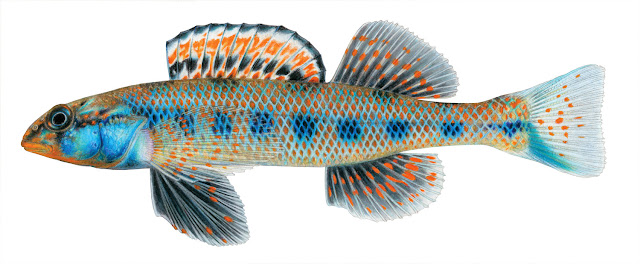TNACI loves November, and not just for the Thanksgiving
holiday. November is the month for Lake
Sturgeon monitoring! For one week
TNACI and its partners in the Lake Sturgeon
reintroduction project (
University of
Tennessee,
US
Fish and Wildlife,
TWRA, and
TVA) intensely sample the upper Tennessee River
in an effort to capture sturgeon that have been
released
there over the last 14 years.
We actually kicked off our week of sturgeon in New Orleans
at the
Southeastern Fishes Council
meeting where scientists from all over the Southeastern U.S. convened to share
their research. TNACI talked to this
group about the Lake Sturgeon project and how far it has come in the last
decade. After catching only 5 Lake Sturgeon over 10
years, the working group enlisted the help of commercial fishermen in
November
2011. This resulted in 34 sturgeon
caught over the sampling week! They
ranged from the 1999-2010 year class and the largest was 44 inches and 18
pounds. The scientists at SFC were
excited to hear about the beginning of recovery of Lake Sturgeon in the
Tennessee River, and TNACI was eager to hit the water and see what happened
this year.
The day after we got back from New Orleans, we met with the
Lake Sturgeon team near Knoxville to begin baiting hooks and determining where
to sample. Each day’s schedule was
basically the same:
1. Pull trotlines in the morning
 |
| Kathilna pulling in lines with TWRA |
2. Re-bait
 |
| Evan baiting trotlines |
 |
| Ashford chopping bait |
3. Setting trotlines in the evening
 |
| TWRA putting out trotlines |
Trotlining is a very labor-intensive fishing method, as
lines must be coiled carefully within the box to ensure the lines go out
without getting caught on themselves.
 |
| Ashford coiling |
 |
| Look at those beautiful coils! |
 |
| Trotlining gone wrong |
It was a cold week, with air temperatures in the 30’s most
mornings. The first evening we set
trotlines in the rain! Thankfully, this effort in bad weather was not wasted as
the team caught 17
sturgeon the
first day!
 |
| Kathlina with a Lake Sturgeon |
Every Sturgeon was measured and weighed.
 |
| Dave Matthews from TVA with a Lake Sturgeon |
 |
| Measuring a Lake Sturgeon |
We also scanned each fish for a Passive Integrative
Transponder (PIT) tag. PIT tags are
basically like the microchips that are commonly used in pets. Each tag has a unique number that can be used
to identify an individual. If the fish
did not have a PIT tag, we injected one so that we can monitor recapture and
movement.
 |
| Injecting a PIT tag |
 |
| Scanning for a PIT tag |
We also checked to see which scutes were missing to
determine the age of the fish.
 |
| Scutes 5 & 6 appear to be missing from this fish |
TVA began collecting data on the type of bottom where we
were catching sturgeon by collecting sediment with a PONAR grab dredge. The sediment composition through the sampling
area did not seem to change much, as it was mostly composed of clay and some
silt.
 |
| Depositing sediement |
 |
| Putting out the PONAR grab dredge |
 |
| Mostly clay and silt sediment from Fort Loudoun Reservoir |
It was a successful week, with 52 Lake Sturgeon caught by
Friday. The biggest was nine years old,
49 inches and 17 pounds. This is the
most we have ever caught in a single sampling week and is almost double last
year’s catch. While this is a promising
sign, it is still too soon to determine if this will be a self sustaining
population. Lake Sturgeon do not
reproduce until they are in their teens, and the oldest fish in the Tennessee
River right now are 14 years old. We are
also not sure how much dams are affecting the movement of the fish. Some have been caught as far downstream as
Kentucky Lake, but it is still yet to be seen if the dams and reservoirs will
affect reproduction and recruitment. We
hope that one day there will be a healthy recreational fishery for this special
animal. But remember, it is still
illegal to keep a Lake Sturgeon, so if you catch one, please release it and report
it to
TWRA;
you will receive a certificate of appreciation.
 |
| Bernie with a Lake Sturgeon |






























